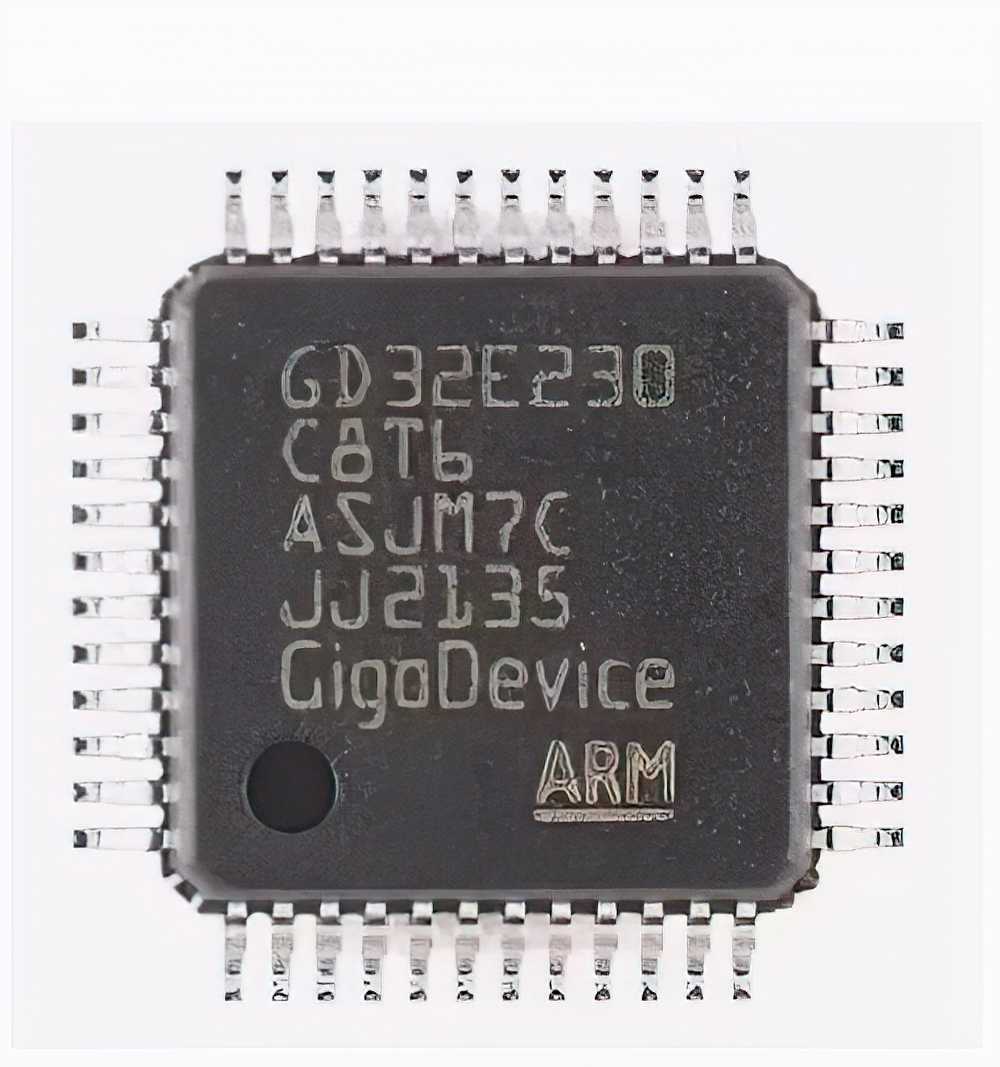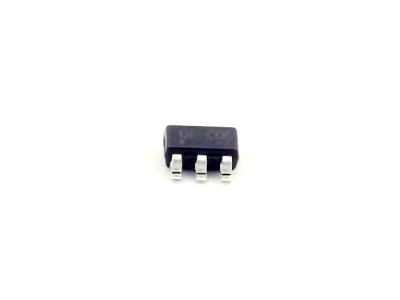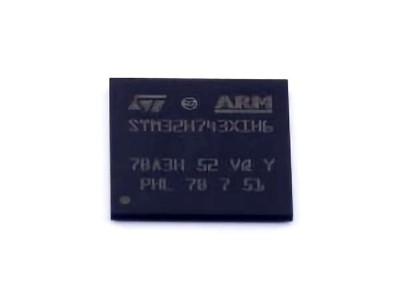The GD32E230C8T6 microcontroller, renowned for its energy efficiency and Power ful features, plays a pivotal role in low-power Embedded systems. This article explores its applications, optimization strategies, and best practices for developers aiming to enhance the performance and longevity of their systems in diverse industries.
GD32E230C8T6, low-power embedded systems, microcontroller, energy efficiency, embedded development, optimization, power consumption, IoT, energy-saving techniques
Introduction to GD32E230C8T6 and Its Applications in Low-Power Embedded Systems
The GD32E230C8T6 microcontroller, part of GigaDevice's GD32E2 series, is an exceptional choice for low-power embedded systems. Built around a 32-bit ARM Cortex-M23 core, this microcontroller is designed with energy efficiency in mind, making it an ideal solution for applications that require long battery life and minimal power consumption.
Low-power embedded systems are integral to a wide range of modern applications. They are used in devices like wearables, IoT sensors, home automation systems, medical devices, and other applications where battery longevity is crucial. The ability to optimize power consumption in such systems is critical, and the GD32E230C8T6 offers several advanced features to help developers achieve this goal.
1.1 Key Features of the GD32E230C8T6
The GD32E230C8T6 microcontroller offers a combination of features that makes it highly suitable for low-power embedded applications:
ARM Cortex-M23 Core: The microcontroller is powered by the ARM Cortex-M23, a highly energy-efficient processor with low power consumption and a high processing capability, making it ideal for handling a wide range of embedded tasks.
Wide Voltage Range: It operates in a voltage range from 1.8V to 3.6V, allowing it to function in various power environments and making it adaptable for different battery-powered applications.
Ultra-Low Power Consumption: With advanced power-saving modes such as Sleep, Stop, and Standby, the GD32E230C8T6 can significantly reduce power consumption during idle or non-critical operations, a critical feature for extending the life of battery-operated devices.
Integrated Peripherals: The microcontroller integrates essential peripherals like UART, SPI, I2C, and ADCs, which are critical for interfacing with external devices in embedded applications, ensuring that developers can minimize the need for additional external components.
High Clock Speed: The GD32E230C8T6 runs at up to 48 MHz, providing sufficient processing power for many embedded applications, even while maintaining a focus on low energy use.
On-Chip Flash and RAM: With a 64 KB flash memory and 20 KB SRAM, the GD32E230C8T6 offers enough space for small applications, such as sensor nodes or simple control systems.
These features make the GD32E230C8T6 a flexible and powerful microcontroller for a variety of low-power embedded system applications.
1.2 Applications of GD32E230C8T6 in Low-Power Embedded Systems
The GD32E230C8T6 is highly adaptable and can be used in numerous applications across various industries. Let’s explore some of the most common ones.
Internet of Things (IoT): The GD32E230C8T6 is widely used in IoT devices such as smart sensors, gateways, and wearable devices. These systems are often battery-powered and require efficient Power Management to extend battery life. The microcontroller’s low-power modes, along with its wide range of Communication interface s, make it an ideal choice for IoT deployments.
Wearable Devices: Wearables such as fitness trackers and health monitoring devices rely heavily on energy-efficient microcontrollers. The GD32E230C8T6’s ultra-low power consumption during sleep or idle states ensures that these devices can operate for extended periods without frequent recharging.
Medical Devices: In the medical industry, portable diagnostic tools, patient monitoring devices, and remote health trackers require long battery life and reliable performance. The GD32E230C8T6 meets these requirements, offering a perfect balance between performance and energy efficiency.
Smart Home and Automation: In smart home applications, devices like motion sensors, temperature controllers, and security systems need to function autonomously over long periods without draining the battery. The GD32E230C8T6 can effectively handle tasks like data collection, communication, and device control, all while consuming minimal power.
Remote Sensing and Data Logging: Applications that involve data collection, such as environmental monitoring, industrial sensors, and asset tracking, demand microcontrollers that can efficiently process sensor data while maintaining low power consumption. The GD32E230C8T6, with its range of analog-to-digital converters (ADCs) and communication interfaces, is ideal for such use cases.
1.3 Challenges in Low-Power Embedded Systems
While the GD32E230C8T6 offers a solid foundation for low-power embedded systems, developers must also consider various challenges in managing power consumption across their applications. These challenges include:
Power Management : Effective power management is crucial to ensuring that the system consumes minimal energy without compromising performance. Developers need to carefully choose when to enter low-power states and balance active and idle times effectively.
Battery Life: For battery-powered devices, optimizing battery life is a top priority. This involves not only selecting the right microcontroller but also designing the entire system, including peripherals, communication protocols, and power consumption algorithms, to maximize battery efficiency.
Thermal Management : Even though the GD32E230C8T6 operates with low power, systems that rely on high computational workloads may still face challenges in maintaining optimal temperature levels. Effective heat dissipation strategies are required to ensure that the device does not overheat, which can impact performance and battery life.
1.4 Conclusion: The Role of GD32E230C8T6 in Optimizing Low-Power Embedded Systems
The GD32E230C8T6 microcontroller stands out as an excellent choice for low-power embedded applications due to its combination of energy-efficient architecture, versatile peripherals, and optimized power consumption features. Its applications in fields like IoT, wearables, medical devices, and smart home systems make it a critical component for the next generation of low-power devices. However, achieving optimal power consumption also requires careful design and integration, which brings us to the next section, where we will explore optimization practices for low-power embedded systems using the GD32E230C8T6.
Optimization Practices for Low-Power Embedded Systems Using GD32E230C8T6
Optimizing power consumption is one of the most important tasks when designing embedded systems, particularly for battery-powered or energy-harvesting devices. In this section, we will delve into the best practices and strategies to optimize the GD32E230C8T6 microcontroller for low-power applications. By employing these techniques, developers can significantly enhance the energy efficiency of their systems.
2.1 Power Management Strategies
Power management in embedded systems involves controlling how and when different parts of the microcontroller and peripherals are active. The GD32E230C8T6 offers several power-saving modes that can help minimize energy consumption without sacrificing performance.
Sleep Mode: In Sleep mode, the processor halts its core activity while keeping the peripherals running. This is useful when the system is waiting for an interrupt or an event. Developers should use this mode when the microcontroller needs to reduce power consumption while still responding to external signals.
Stop Mode: In Stop mode, the system clock is stopped, and the core is powered down, reducing power usage even further. The GD32E230C8T6 allows peripherals such as timers, ADCs, and communication module s to continue functioning while the core is off. This is an ideal mode for systems that need to maintain functionality but do not require continuous processing.
Standby Mode: Standby mode is the deepest sleep state, where most of the microcontroller’s internal components, including the core, are powered down. Only a few critical functions, such as external interrupt detection, remain active. This mode is perfect for applications that can afford to be inactive for long periods.
By carefully choosing between these modes, developers can achieve significant reductions in power consumption without compromising the device’s functionality.
2.2 Clock Management
The clock system of the GD32E230C8T6 plays a crucial role in controlling power consumption. The microcontroller allows dynamic adjustment of the system clock to reduce power usage.
Adjusting the System Clock: The GD32E230C8T6 offers flexible clocking options, including a high-speed external crystal oscillator (HSE) and a low-speed internal RC oscillator (LSI). During low-power operations, developers should opt for lower clock frequencies or switch to the LSI to reduce power consumption.
Clock Gating: Clock gating is a technique where the clock signal to unused peripherals is turned off, thus preventing unnecessary power consumption. Developers should carefully disable unused peripherals and clocks when they are not in use to optimize energy efficiency.
2.3 Peripheral Optimization
Peripheral devices often consume a substantial portion of the total power in an embedded system. Therefore, effective management of peripherals is key to power optimization.
Power-Down Peripherals When Not in Use: The GD32E230C8T6 allows developers to selectively power down peripherals that are not in use. For example, the ADC or UART can be disabled during idle periods to save power.
Optimize Communication Interfaces: Communication modules like UART, SPI, and I2C can be power-hungry if constantly active. It’s essential to implement low-power communication protocols, such as reducing the frequency of data transmission or switching off communication when the system is idle.
Efficient Use of ADC: The GD32E230C8T6 has multiple channels for analog-to-digital conversion, which are critical in sensor-based applications. To reduce power consumption, developers should configure the ADC to take readings only when necessary and use low-speed settings during non-critical operations.
2.4 Software Optimization Techniques
Power optimization is not just about hardware settings; software also plays a significant role in controlling energy consumption.
Efficient Task Scheduling: Efficient task scheduling can reduce unnecessary wake-ups of the microcontroller. By grouping tasks together and activating the microcontroller only when needed, developers can optimize power use.
Interrupt-Driven Design: Instead of polling for events continuously, developers should leverage interrupts to wake up the system only when a specific event occurs. This allows the microcontroller to remain in a low-power state for longer periods.
Low-Power Algorithms: Implementing low-power algorithms in the software, such as data compression or sensor fusion techniques, can help reduce processing time and energy consumption.
2.5 Advanced Techniques for Optimizing Power Consumption
For advanced low-power applications, developers can implement more sophisticated techniques, including:
Dynamic Voltage and Frequency Scaling (DVFS): This technique involves adjusting the supply voltage and clock frequency based on the system load. By scaling down both, developers can reduce the overall energy consumption while maintaining adequate performance.
Energy Harvesting: In some applications, such as remote sensing or environmental monitoring, developers may incorporate energy harvesting techniques to recharge the battery. The GD32E230C8T6's energy-efficient features can complement such solutions by minimizing the power consumption when the system is idle.
2.6 Conclusion: Achieving Optimal Power Efficiency with GD32E230C8T6
Optimizing power consumption in embedded systems is a multi-faceted challenge that requires both hardware and software solutions. The GD32E230C8T6 microcontroller provides a robust platform for low-power applications, with its various power modes, flexible clock system, and optimized peripherals. By implementing best practices like power management strategies, clock and peripheral optimization, and software techniques, developers can maximize the energy efficiency of their systems, ensuring long-lasting, reliable performance in battery-powered and energy-conscious applications.
If you are looking for more information on commonly used Electronic Components Models or about Electronic Components Product Catalog datasheets, compile all purchasing and CAD information into one place.


